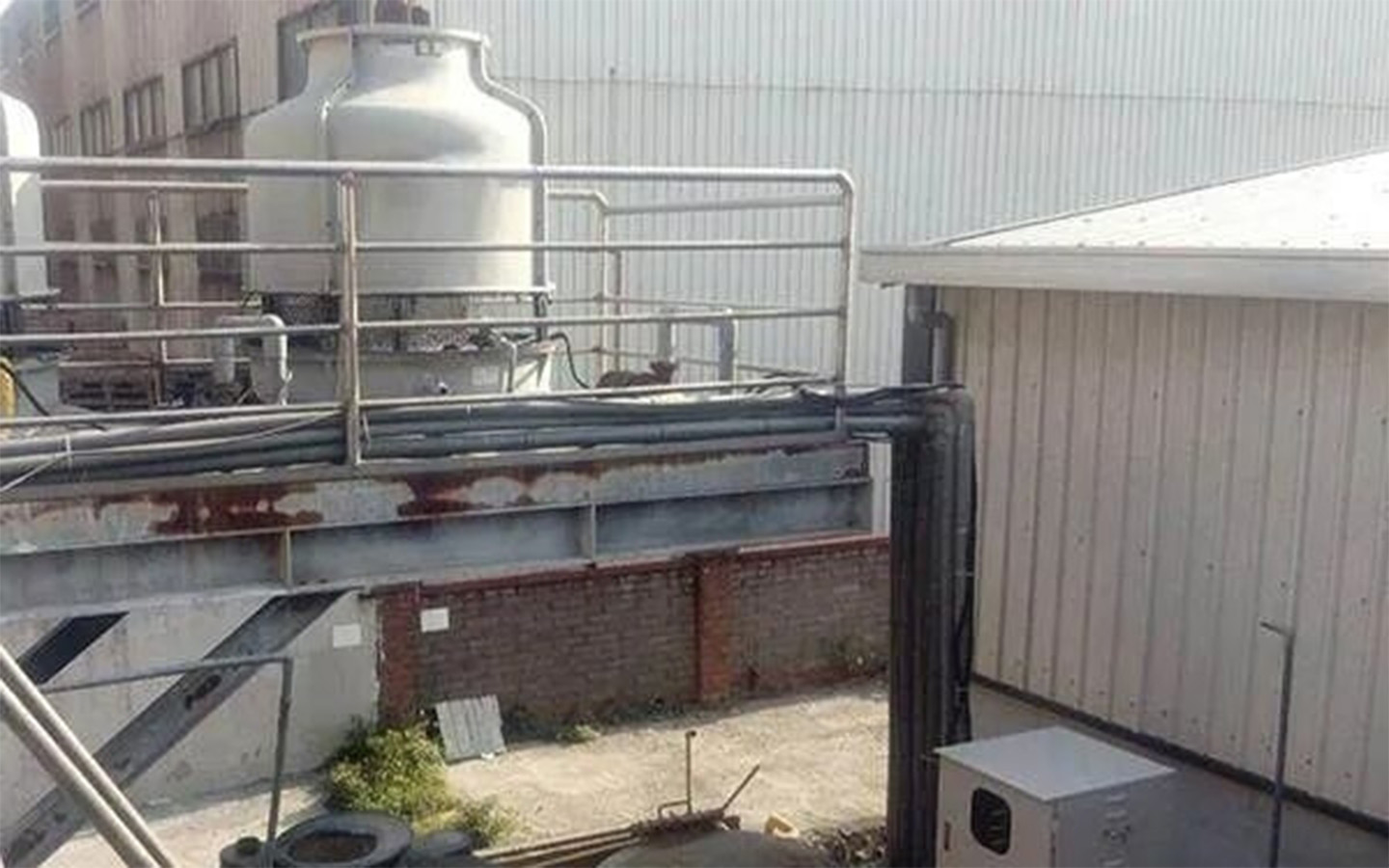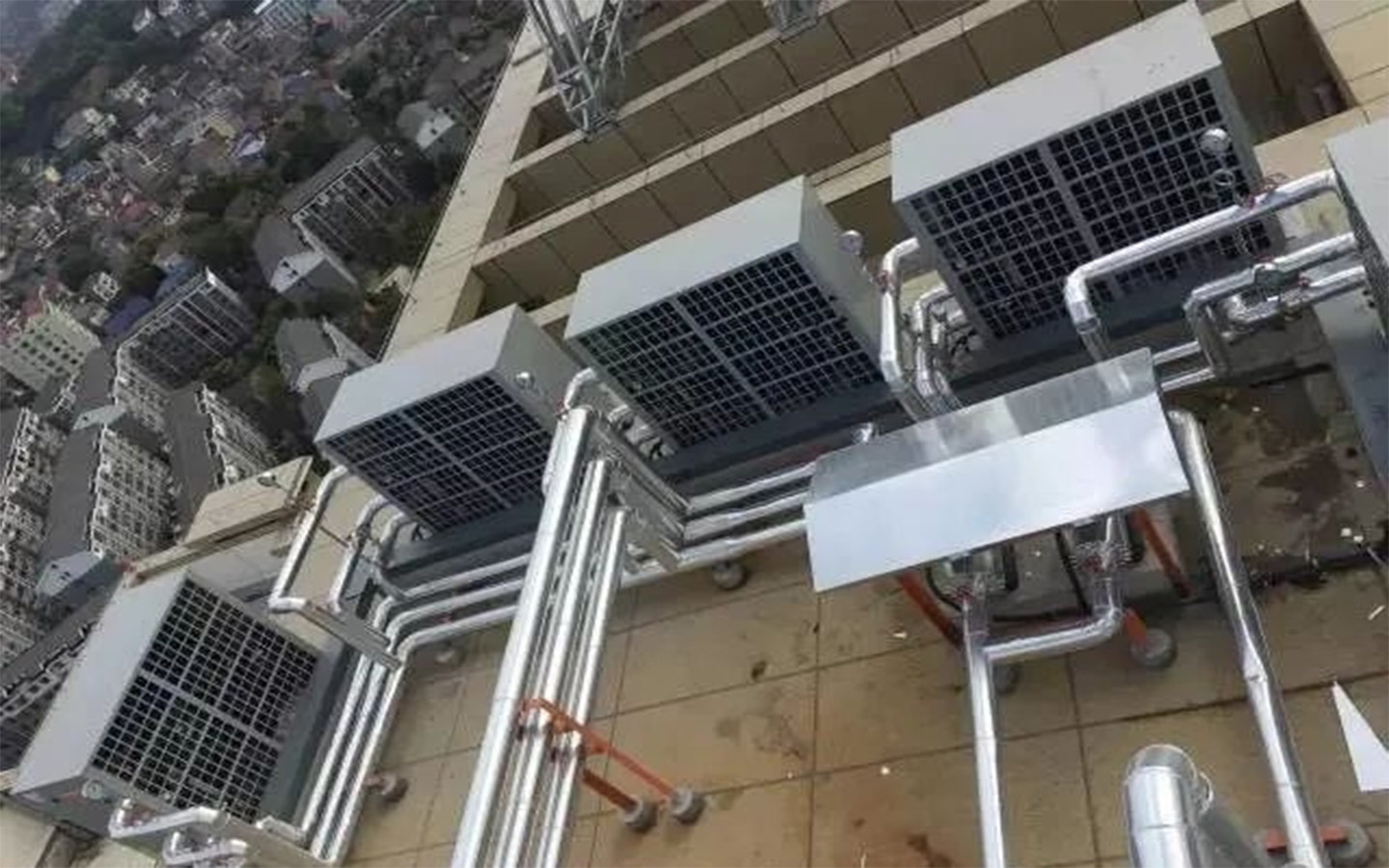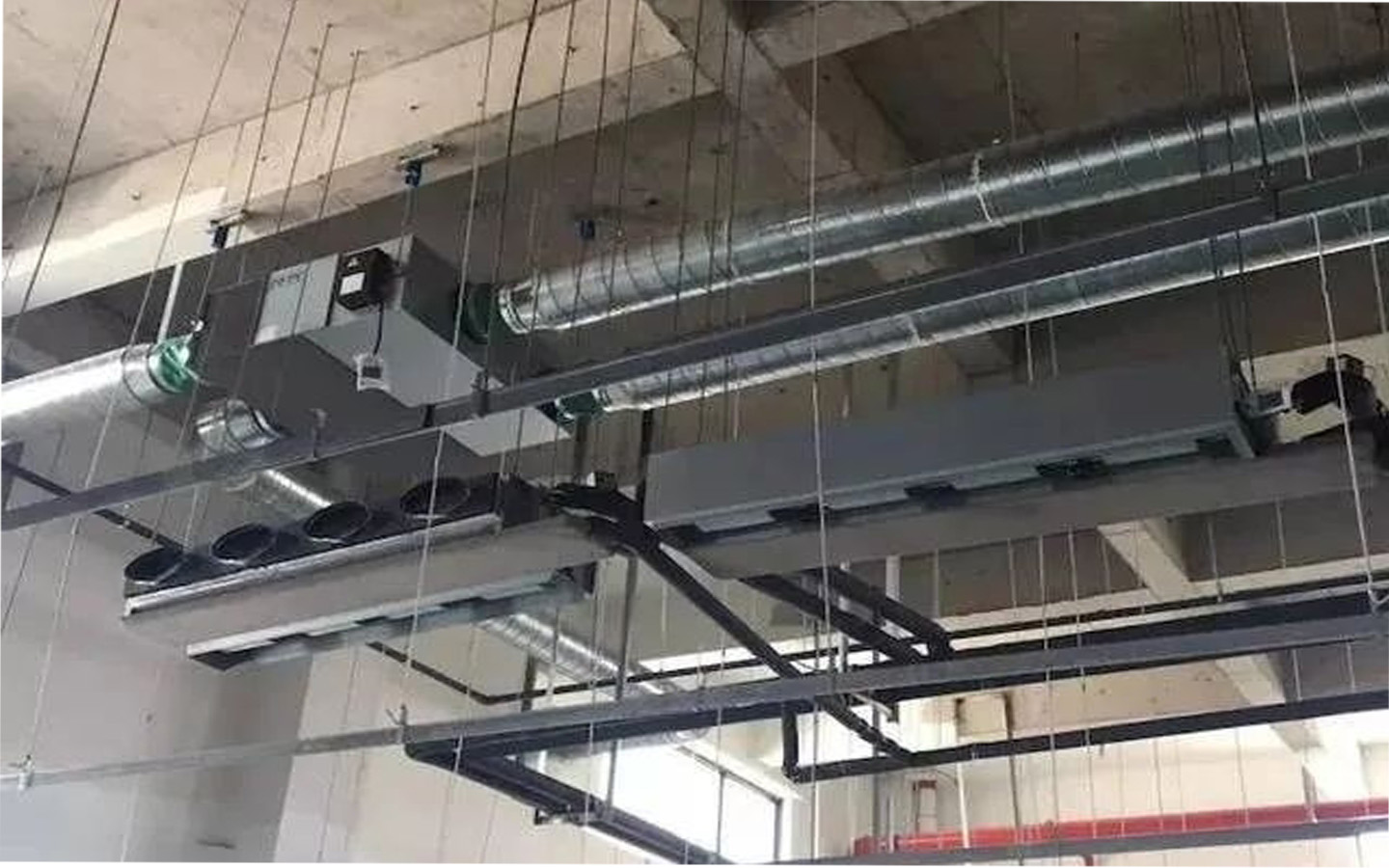
(1) Overview of HVAC circulating water system
With the continuous development of my country’s economy and people’s increasing requirements for the comfort of the living environment, heating, ventilation and air conditioning (HVAC) is becoming more and more popular in commercial and civil buildings. HVAC includes heating, ventilation, and air conditioning. Compared with traditional air conditioners, in addition to heating and cooling functions, it can effectively improve indoor air quality and prevent the occurrence of air conditioning diseases. Its circulating water system consists of outdoor units, water pipes, circulating water pumps and various indoor terminals (fan coil units, exposed installation, etc.). The circulating water pump is the “heart” of the system and is also the most widely discussed content. In the HVAC circulating water system, about 30% of its energy consumption is consumed by the circulating water pump. The electricity consumption of the air conditioning project accounts for about 40%-50% of the total electricity consumption of the building, while the electricity consumption of the air conditioning water pump The amount of water pump accounts for about 18% of the power consumption of air conditioners, which requires that many factors should be considered when designing and selecting water pumps.
1. Set up winter and summer circulating water pumps separately
In the circulating water system, the circulating water pump mainly provides power for the circulating flow of cold (hot) coal. Most air conditioning systems operate year-round, supplying hot water in winter and cold water in summer. However, as the outdoor temperature changes, the system needs The circulating water flow rate will change greatly. In some projects, during the design process, they only blindly pursue investment reduction or other benefit considerations. Instead of setting up winter and summer circulating water pumps separately, they share circulating water pumps. However, in actual projects, the heating load of most buildings in winter is smaller than the cooling load in summer, and the temperature difference between the supply and return water of the air-conditioning water system is generally 5 in summer and 10 in winter, and the pipelines adopt double pipes. Therefore, the air-conditioning circulating water flow in winter will be 1/3-1/2 of that in summer. Theoretically speaking, the head of the water pump in winter is 1/9-1/4 of that in summer. In order to save energy, consider designing two sets of water pumps to supply water in winter and summer respectively. To use, use valve switching.
2. Reduce energy consumption of circulating water pumps
The correct selection of circulating water pumps has a great impact on energy saving in HVAC. One of the main reasons for excessive energy consumption of water pumps is that the influence of the water pump performance curve and the characteristic curve of the pipe network on the parallel connection of water pumps is not considered during equipment design and selection. The performance of the water pump does not match the pipe network. Therefore, the reasonable selection and matching of water pumps is the key to the normal operation of the HVAC circulating water system and energy saving. The circulating water pump in the heating and cooling system is always connected to a specific pipeline. The working state point of the circulating water pump is determined by the performance curve of the water pump and the characteristic curve of the pipeline. Therefore, we should choose water pumps with different characteristics based on different uses, pipeline characteristics, and flow changes.
(2) Problems existing in the circulating water system
1. The impact of various dirt, bacteria and algae on the circulating water system
During the operation of the circulating water system of the air conditioning system, a large amount of substances will be deposited on the heat transfer surface of the heat exchanger or the inner wall of the pipe. The composite scale formed by a large amount of scale, bacteria, algae and dirt can cause corrosion to the pipes and affect the refrigerator. Heat exchange efficiency and water quality of the condenser. For an open circulating water system, the water temperature is generally between 30-40°C. When the system is operating normally, dust, impurities and suspended matter in the air enter the system through the cooling tower due to the influence of weather and environment. The high-temperature cooling water continuously evaporates into the atmosphere through the cooling tower, causing the cooling water to be concentrated. When entering the heat exchanger, during the heat exchange process, a large amount of calcium and magnesium ions in the water are precipitated and adhered to the Scale is formed on the surface of the heat exchanger; although most HVAC chilled water systems are closed loop systems, and the possibility of scaling is small, single-pipe chilled water systems that deliver hot water in winter, because the water temperature in winter is about At about 8O℃, there is the possibility of scaling on the heat exchange equipment; because the cooling circulating water system has been in a high temperature and high humidity environment for a long time, it provides a good environment for the reproduction of bacteria and algae, resulting in the growth of a large amount of algae; due to the presence of dissolved oxygen Serious corrosion problems caused by the “red water” phenomenon often occur, especially in systems that use softened water or demineralized water. These factors will not only lead to insufficient output of the refrigerator and a decrease in COP (coefficient of performance), affecting the life of the refrigerator, but also lead to deterioration of water quality, thus affecting heat exchange efficiency. Therefore, operators should pay attention to when the condenser of the refrigerator When the water side is scaled, the easiest phenomenon to judge is that the outer wall temperature of the condenser is obviously higher than that of the normal unit, which can be felt by touching it. At the same time, it can be found through the condensation pressure gauge of the refrigerator that the condenser is scaled. The condensing pressure is significantly higher than a normal refrigerator. Cleaning the condenser drain pipe from time to time according to the condensing pressure, regularly replacing the cooling water, and softening the incoming water are all effective measures to reduce scaling on the water side of the condenser.

2. The impact of hydraulic balance imbalance on the circulating water system
Hydraulic balance imbalance is the most common problem in building HVAC water systems. Hydraulic balance refers to the ability of each thermal user in the network to maintain its own flow rate unchanged when the flow rate of other thermal users changes. Hydraulic balancing technology is the most important of all energy-saving measures and is the basis of all work. Hydraulic balance imbalance is the inconsistency between the actual flow rate of each heating and cooling user in the hot water heating system and air conditioning chilled water system and the design required flow rate. In accordance with the thermal engineering requirements of national specifications, the relative difference in pressure loss between parallel loops should be reduced by rationally dividing and evenly arranging the loops, and performing hydraulic balance calculations. Due to hydraulic imbalance, the system flow distribution is unreasonable, with excess flow in some areas and insufficient flow in some areas, resulting in some areas not being hot in winter and not cold in summer; the system’s unreasonable delivery of cold and heat results in a waste of energy. In HVAC hydraulic engineering, when the relative difference is greater than 15%, the necessary hydraulic balance devices should be configured according to the hydraulic balance requirements, the hydraulic balance valve should be installed reasonably, and the correct method should be used for system joint debugging, which can greatly improve the performance of the system. Hydraulic characteristics enable the system to approach or reach hydraulic balance, which not only ensures the normal operation of the system, but also saves energy and enables the system to operate economically and efficiently.
(3) Water treatment of HVAC circulating water system
During the operation of the water in the circulating water system, the water temperature will rise or fall repeatedly. Although its physical properties do not change much, after long-term recycling, some dissolved substances in the water will concentrate or disappear, dirt will accumulate, and microorganisms will grow, causing equipment to malfunction. , scale deposition in pipelines or corrosion of metal equipment pipelines. Since the equipment and pipes in the HVAC circulating water system are mostly made of seamless steel pipes, welded pipes and galvanized steel pipes, these equipment and pipes may be severely corroded or even “perforated” if used for a long time. Therefore, it must be cooled and stabilized. Failure to treat the water quality will result in serious damage to the refrigeration equipment, a significant reduction in heat exchange efficiency, and unnecessary waste of energy. It can be seen that it is very necessary to carry out corrosion inhibition, scale inhibition, sterilization and algae removal treatment on the system water. There is currently no water quality standard specifically for central air-conditioning circulating cooling water in my country. The standard for evaluating the quality of water treatment measures is basically based on the “Design Code for Industrial Circulating Cooling Water Treatment” (GBS0050-95).
It is believed that the purpose of cleaning can be achieved by repeatedly flushing the system with water. In fact, this is not the case. Even if the most complete water flushing is carried out, at best, 6 to 15% of the dirt in the system will be removed, and most of the dirt will still remain in the system. At present, the cooling cycle is Water treatment is divided into two types: physical method and chemical method. The chemical method not only adds water quality stabilizers with scale inhibition, corrosion inhibition, sterilization, and algae killing effects to the circulating water, but also treats the circulating water. The traditional dosing method generally requires the water quality to be analyzed first and determined through dynamic simulation. At the same time, attention needs to be paid to its synergistic effects of corrosion inhibition, scale inhibition, sterilization, and algae prevention. If the water quality stabilizer formula is improperly selected, it will cause one thing to be lost. For air-conditioning cooling circulating water, this method has high technical requirements and is troublesome to operate and manage. Special attention should be paid to the corrosiveness of the agent to system materials and should be used with caution in HVAC. HVAC cooling circulating water systems generally use physical methods. The physical treatment equipment is simple, easy to operate, has low operating costs, and has the comprehensive effects of scale removal, corrosion inhibition, and algae removal. The physical method mainly uses: electrostatic water treatment instrument, electronic water processor, and internal magnetic water processor for treatment. The most commonly used product at present and should be the first choice is the electronic water treatment instrument or electronic descaling instrument. It mainly produces anti-scaling, descaling, corrosion inhibition, sterilization, algae removal and anti-rust functions by forming a high-frequency electromagnetic field. When choosing a model, you should compare cost performance and power consumption.
There are both copper and iron in the pipelines of the air conditioning water system. To protect both metals, the pH value of the water in the system should be controlled between 9 and 9.9, because the passivation zone of iron is at the pH The value is 9 to 13. Iron likes alkaline media, while copper is afraid of alkali. When the pH value reaches 10, copper begins to corrode. Therefore, in a water system where both copper and iron coexist, the pH value must be strictly controlled between 9 and 9.9. Doing so will also help inhibit bacterial and algae growth.
It can be seen that timely water treatment of the HVAC circulating water system and good anti-scaling, anti-rust, and anti-microbial mud management are crucial to extending the service life of the system and ensuring efficient and stable long-term operation of the system. meaning.


 Español
Español Русский
Русский Tiếng Việt
Tiếng Việt 中文
中文 suomi
suomi Français
Français Português
Português English
English Deutsch
Deutsch Français
Français Español
Español Italiano
Italiano Português
Português Pусский
Pусский


